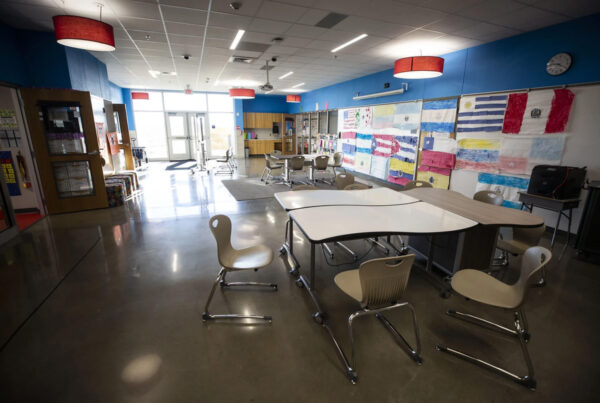When it comes to the energy industry in Texas, some say it can feel like the wild west. Matt Smith, lead oil analyst for the Americas at Kpler, spoke with Texas Standard on the good, the bad and the ugly of it all. Listen to the story above or read the transcript below.
This transcript has been edited lightly for clarity:
Texas Standard: Let’s begin with the good. Natural gas prices continue to remain low – good for consumers. I would guess we’re now down to, what is it, a 30-month low?
Matt Smith: Yeah, exactly. $2 in MMBtu.
Why are prices so low? They keep dropping and I think a lot of folks were bracing for increases, especially with what’s happening in other parts of the world.
Oh, my gosh. Yeah. And so we’ve talked previously about how prices got close to $10 in MMBtu sort of at the end of last summer. But since then, you know, in recent years, it’s been a combination of things – both on the supply and demand side of things. So we’ve had rising production that has boosted supply, while a mostly mild winter has weighed on demand. And this has left natural gas storage levels about 20% higher than their normal level. So that’s a good thing. So that should reflect through in the power prices. Given these lower natural gas prices, though, some producers are starting to cut production. But the kicker is that 30% of U.S. natural gas production is from associated gas, which means that it’s a byproduct, essentially an afterthought of oil production. So these producers are going after the oil and essentially the natural gas is gravy. It doesn’t matter, you know, as long as it’s above zero, they’re getting money for it.
So we shouldn’t expect a material drop in natural gas production, which means we should see prices staying in check. But as to where we go from here, a lot more depends on the weather. We’re kind of going through shoulder months, the periods of more neutral temperatures. But summer is coming. And so that could really drive up demand and prices.
Moving on to the bad, OPEC announced a surprise production cut at the end of last month. You know, let’s get back to those rules of supply and demand you’re referencing there. I would assume less supply is bad for the prices at the pump.
The short answer is yes. So the OPEC+ decision to cut production caused prices to jump $5 straightaway. This popped early last week, which has already caused prices at the pump to rise by 10 cents, both in Texas and on the national average. And this increase is going to continue to work its way into retail prices that pop for oil. And this comes at a time when we typically see prices at the pump rising anyway, given the switch to a more expensive summer blend and a general rise ahead of the summer driving season. So, yeah, in a word, bad.
Let’s look at what, in Texas, might be the silver lining for Texas oil producers, right?
Yeah, absolutely. And production should be spurred on because of this high price. So according to Dallas Fed’s quarterly energy survey that came out at the end of last month, firms need a price of about $62 a barrel to be able to essentially profitably drill oil. And that was a price level that we weren’t a million miles away from prior to the OPEC cut. You know, we dipped to $66 mid-last month, and not all areas need the same break even, while some smaller firms need a high price and larger firms have economies of scale. But we still need a price sort of in that 50s to 60s range for these oil companies to break even.
Do you see with prices going up in the commodity markets that we’re going to see more people employed in the oil production industry here in Texas?
The labor market is still tight for the oil industry, but we’re in a different paradigm now in that these oil companies are very much focused on returning money to shareholders – paying dividends rather than actually drilling. And so it doesn’t necessarily equate up to it.
Yeah, well, pretty ugly situation. Speaking of ugly, the economy continues to truck along despite interest rate hikes. And Friday’s latest jobs data points to a healthy U.S. economy. Doesn’t seem ugly, but do you still expect things to get that way later this year? What do you think?
Unfortunately, yes. So, yeah, to your point, the monthly jobs data on Friday was encouraging. It showed decent job creation, an unemployment rate at 3.5%. So very low. But, you know, in the last month we’ve seen the banking crisis in the run on SVB bank, and essentially the impact of rising interest rates is starting to break things in the economy. So we have perhaps further rate hikes to come. And we’re still got to deal with the full impact of the interest rate hikes we’ve had over the last year. So once we do, the concern is that we see weakness in the economy in terms of the housing market, jobs, weak consumer spending and deteriorating industrial activity. I hope I’m wrong, but that’s the concern.












